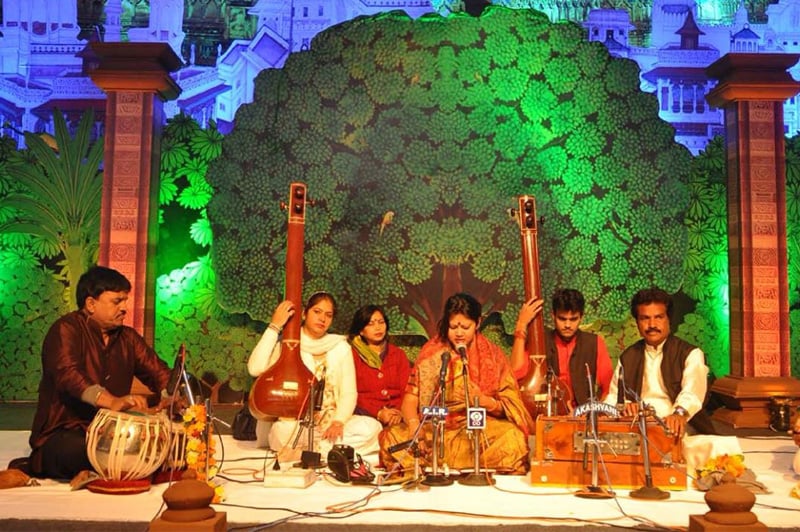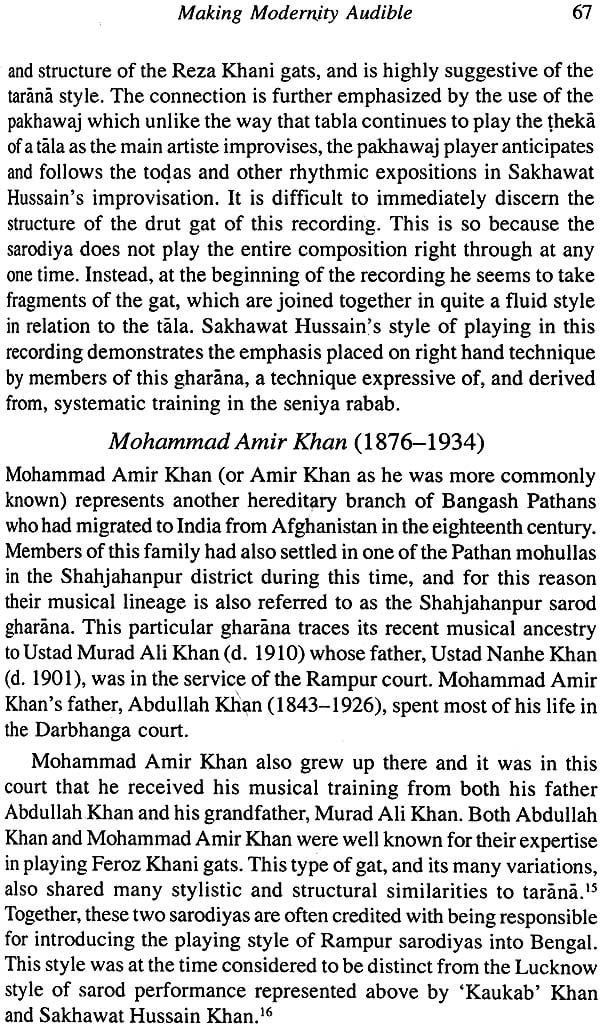
If you think of the octave as being like the light spectrum, the musical notes would be like the colors in the spectrum, and ragas would be like color schemes. Here is an analogy to help you visualize a raga. Students first learn all the important ragas, then spend many years mastering the ragas of their choice. Sometimes ragas die out if people stop performing them, but then new ragas are born all the time, and some of them endure. About five hundred ragas are known or known of (including historical ragas) today.

The main thing Indian classical music does is explore the melodic and emotional potential of different ragas. The Todi scale (flat 2nd, 3rd, & 6th sharp 4th)

Different sets of notes evoke different moods and inspire different feelings. Music has the power to move us because it can speak to our deepest emotions through the moods it creates. Superficially, a raga can be thought of as a scale – a musical theme created by choosing a specific set of notes from within an octave. Achieving all that takes many decades of study and training, and only rarely will you find an artist who can be taken seriously before the age of 40. A performance must have a clear structure, it must feature certain elements, it must progress coherently, attain climax, and be brought to a conclusion, and it must measure up to certain standards. So, it doesn't take much to improvise little bits of melody here and there, but it gets more difficult when you try to improvise in coordination with the rhythm, and becoming an artist capable of hour-long extemporaneous performances is a different story altogether. I have nowhere near the level of talent it takes to become a performing artist, but I can make spontaneous music, and that's an inexhaustible source of delight. It's really not that difficult to improvise melodies in a raga you're familiar with.

In Indian classical music, once you have learned the basic notes, you are introduced to ragas (which are like musical themes), and then you are encouraged to start improvising and making your own melodies. With language, once you've learned certain basic things like grammar and vocabulary, you start making your own sentences. One of my favorite things about Indian classical music is that you learn it very much the way you would learn a language. Harmony in the Western sense, however, is not a part of traditional Indian music, and it is important not to look for it. Harmony in Indian classical music is mainly the result of the tanpura playing a combination of the tonic (sa) and the fifth (pa) or fourth (ma) in a fixed pattern in the background, somewhat like an arpeggiated chord. In performance, rhythm also plays an important role, giving texture, sensuality, and a sense of purpose to melody. Because of its contemplative, spiritual nature, Indian classical music is a solitary pursuit that focuses mainly on melodic development. Most music has at least three main elements - melody, rhythm and harmony. It is a rewarding experience, no matter how deep or shallow your involvement. But the thing about music is that you can take it as seriously or as casually as you like.

So, for those who take it seriously, classical music involves single-minded devotion and lifelong commitment. Ancient Indians were deeply impressed by the spiritual power of music, and it is out of this that Indian classical music was born. Music can be a social activity, but it can also be a very spiritual experience.


 0 kommentar(er)
0 kommentar(er)
